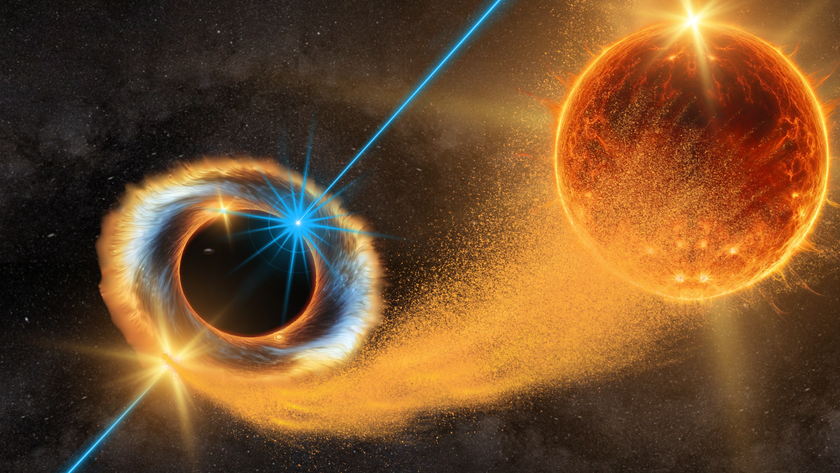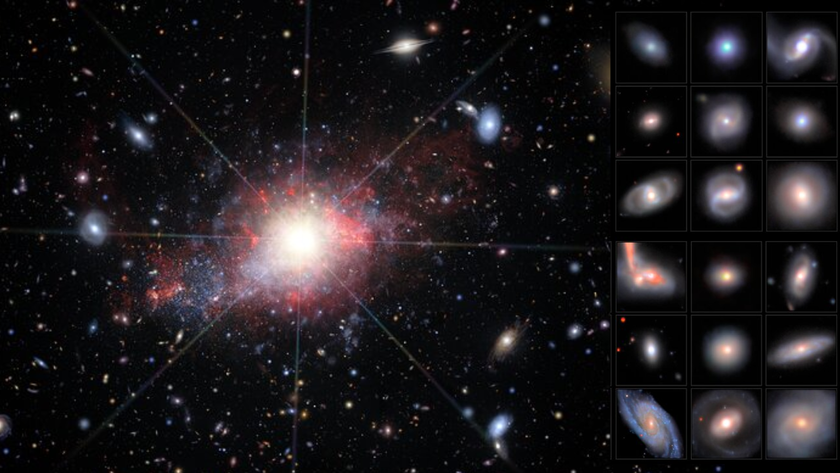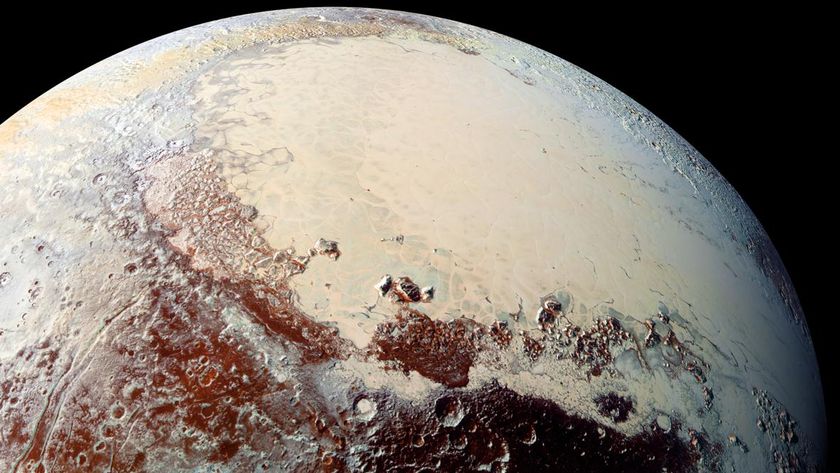Potentially Dangerous Asteroid Is Actually a Pile of Rubble
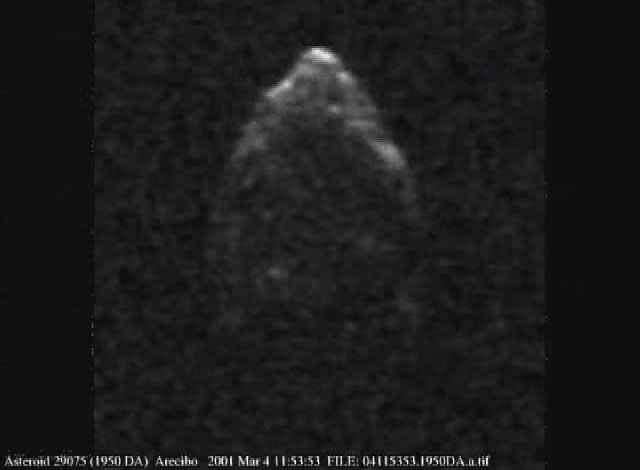
An asteroid on NASA's list of potential impact threats to the Earth is actually a pile of loosely connected rubble held together by forces weaker than the weight of a penny, scientists say.
The discovery could be vital if humanity ever has to destroy a giant space rock before it hits Earth, researchers added.
Astronomers investigated near-Earth asteroid 1950 DA, which is about four-fifths of a mile wide (1.3 kilometers). This asteroid currently has one of the greatest chances of colliding with Earth of any known asteroid, with about a 1 in 4,000 chance of impacting the Earth in the year 2880.[Potentially Dangerous Asteroids Near Earth (Photos)]
A study in 2003 suggested that if asteroid 1950 DA smashed into the Atlantic Ocean about 360 miles (580 km) from the United States, the resulting blast could be equal to a 60,000-megaton explosion, or about 3.75 million times stronger than the nuclear bomb dropped on Hiroshima, causing tsunami waves at least 200 feet high (60 meters) to crash against the East Coast.
Unexpectedly, the scientists found 1950 DA is a porous rubble pile, about half of which is empty space. They also discovered that this loose collection of rocks is spinning faster than the forces of gravity or friction would allow it to remain in one piece, which suggests mysterious forces are helping this clump of debris to stick together.
"I was expecting to find a high-density metallic asteroid, as such an asteroid wouldn't require cohesive forces to hold itself together under its fast rotation," lead study author Ben Rozitis, an astronomer at the University of Tennessee at Knoxville, told Space.com. "Instead we found the opposite!"

A rock pile in space
In the past decade, scientists have confirmed that many asteroids are not solid rocks, but are instead cosmic rubble piles made up of jumbles of rocks. Researchers typically suggest that these asteroids stay together due to gravity pulling them into clusters and friction locking them in place.
Get the Space.com Newsletter
Breaking space news, the latest updates on rocket launches, skywatching events and more!
Asteroid 1950 DA is covered with sandy particles known as regolith. At the same time, the asteroid spins quickly, completing one revolution every 2.12 hours. The centripetal force the asteroid experiences — the same force that causes the arms of a spinning ice skater to drift outward — should fling its regolith away. [7 Strangest Asteroids of the Solar System]
"We knew from previous work that this asteroid was rotating faster than it should be, and we wanted to know why," Rozitis said.
Based on the asteroid's size, density and shape, in order for centripetal force to not break 1950 DA apart, the researchers estimate the asteroid needs at least 64 pascals of pressure to hold together, similar to the amount of pressure a penny exerts on the palm of a person's hand. Scientists have previously suggested that cohesive forces other than gravity and friction can help keep rubble-pile asteroids from spinning apart — for instance, van der Waals forces are weak, short-range electric forces that can attract particles together.
"We found a low-density rubble pile that traditionally would be unable to hold itself together unless cohesive forces were present," Rozitis said. "It's exciting because we've provided the first evidence that cohesive forces are important for small asteroids, which had only been predicted up until now."
These findings could shed light on how disks of gas and dust around newborn stars coalesce into asteroids, comets, rings, moons and planets, researchers say. "Cohesive forces will be present in every asteroid, and not just the fast-spinning ones," Rozitis said. "It is just easier to observe the effects of cohesive forces in the fast-spinning ones."
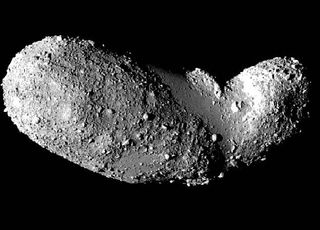
Asteroid mining and defense concerns
In addition, the complexity of the forces holding rubble piles together might complicate government and private missions to visit and mine asteroids, they added.
"Mining missions intend to visit small asteroids about 10 meters (33 feet) or less in size, as it is thought that they are predominantly solid bodies," Rozitis said. "However, cohesive forces enable such small asteroids to be rubble piles instead. A small rubble-pile asteroid would be harder to interact with and collect, as it can easily deform or break up when subject to external forces."
This work could also inform future strategies to prevent asteroids from impacting Earth.
"The best way to mitigate an impacting asteroid is to nudge it slightly several years before impact so that it changes course," Rozitis said. "This can be done by hitting the asteroid with a fast and heavy spacecraft. However, by hitting a fast rotating asteroid held together by cohesive forces, you risk breaking it up into several smaller, hazardous asteroids. Therefore, with such an asteroid, you want to avoid interacting with it directly to prevent it breaking up. An alternative is to use a 'gravity tractor,' or a heavy spacecraft placed near the asteroid, which uses the force of gravity to pull the asteroid off course."
Future research can investigate fast-spinning asteroids of different compositions, "as the cohesive forces involved might vary with asteroid composition," Rozitis said.
Rozitis and his colleagues Eric MacLennan and Joshua Emery detailed their research in the Aug. 14 edition of the journal Nature.
Follow us @Spacedotcom, Facebook and Google+. Original article on Space.com.
Join our Space Forums to keep talking space on the latest missions, night sky and more! And if you have a news tip, correction or comment, let us know at: community@space.com.

Charles Q. Choi is a contributing writer for Space.com and Live Science. He covers all things human origins and astronomy as well as physics, animals and general science topics. Charles has a Master of Arts degree from the University of Missouri-Columbia, School of Journalism and a Bachelor of Arts degree from the University of South Florida. Charles has visited every continent on Earth, drinking rancid yak butter tea in Lhasa, snorkeling with sea lions in the Galapagos and even climbing an iceberg in Antarctica. Visit him at http://www.sciwriter.us
Most Popular



